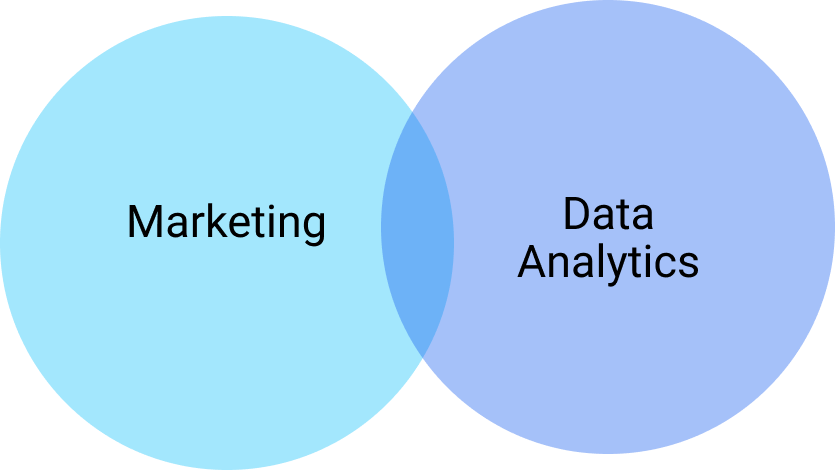How to Become a Marketing Data Analyst in 2024
A day in the life of a marketing data analyst 50 years ago is far from what it looks like today.
Besides the fact that they had to spend ages collecting data from various sources, including actual physical documents, they needed to be highly technical and experienced in various coding languages to be able to do their jobs.
This is completely different from what it looks like today. If you’re interested in becoming a data analyst in the 21st century, you came to the right place. This guide will show you exactly how to become a marketing data analyst. Including:
- Learning frameworks
- Emerging trends
- Must-read resources
- Lots more
So, if you want to get your career in marketing analytics started, this guide is for you.
What is a Marketing Data Analyst?
A marketing data analyst helps businesses understand their customers, optimize marketing campaigns, allocate resources effectively, and ultimately achieve better marketing outcomes.

They do this by collecting and analyzing data related to marketing activities. This can be as simple as sending 2 different emails to see which subject line gets opened the most, all the way to predicting the optimal budget allocation with Marketing Mix Modeling.
What Skills Should a Marketing Data Analyst Have?
People who end up working as marketing data analysts are generally marketers who have become comfortable with data, or data people who discovered they love solving marketing problems. This is a rare combination as most of the time businesspeople don’t like doing technical work and vice versa, making it a highly sought-after role in the market.
With that, here are the core skills a marketing data analyst needs to have:
- Knowledge of statistics (descriptive statistics, experiment design, regression analysis, etc.) Experience with data analytics and visualization software (Excel, Power BI)
- Programming skills for data manipulation (Python, R, SQL)
- Strong communication skills (writing, storytelling, reporting)
- Marketing domain knowledge
- Understanding how media works
- Core competency in a channel helps a lot (for example: Google Ads, Facebook Ads, SEO, etc.)
How To Prepare for a Marketing Data Analyst Role
If you read the list of skills and started having doubts about whether being a marketing data analyst is the right fit for you, don’t worry. No one ever started as an expert in all of that.
What usually happens is that you become sufficiently knowledgeable at just one of those skills, then use that to get your foot in the door, usually as a marketer or data analyst.
Over time, you will build up your knowledge and get comfortable with the different aspects the position requires. Of course, you must push yourself to learn! In this article we cover 4 main ways to do that:
- Taking courses
- Doing side projects
- Contributing to your current job
- Keeping up with the latest industry trends
- Taking Courses
There’s no way around it; this role requires some technical chops. The sooner you get yourself comfortable with crunching numbers and manipulating data, the better. Taking courses and certifications is a solid way to build that muscle. There are so many great courses out there.
Marketing analytics is a multidisciplinary field so there are a lot of different ways to begin your learning journey. Here are a few we recommend:
2. Taking Courses
There’s no better way to learn than practice. You can get all the certifications you want, but if you don’t have an outlet to implement what you’re learning, you will simply lose all of it. That’s why it’s important to always follow up on courses with hands-on projects.
Here are a few project ideas to get you going:
- Experiment with paid ads: some ad platforms like LinkedIn offer free credits to run ads. You could use this to test different ad formats and see how to improve conversion rates.
- Do a basic Marketing Mix Model using Excel: this helps you understand the different types of marketing data out there, you will also understand how to use this data to identify trends and optimize marketing outcomes (We made a Udemy course about this if you’re interested)
- Build a business website: this opens the door for a lot of exploration. Once you have your website, start with a Google Analytics 4 setup, then you can integrate a CRM, install tracking pixels, analyze with SEO tool, etc.
3. Contributing to Your Current Job
If you’re already working, one of the most effective ways to practice marketing analytics is by helping the marketing team at your company.
Nowadays, a lot of marketers are overwhelmed with a barrage of tasks, and they would likely welcome your help. Whether it’s attribution, SEO, some annoying excel report no one wants to touch, there are many ways you can contribute.
Of course, make sure it doesn’t take away from your actual job responsibilities. And try not to burden them! Otherwise, they wouldn’t look forward to your help anymore.
The cool thing about this is that if you do a great job, you might be able to make a case for your company to switch you to a marketing data analyst role altogether!
And if that doesn’t happen, you will still have some relevant achievements you can add to your resume that will help you land that next position.
If you’re not yet confident about your abilities, one easy thing you can start with is to just sit close to the marketing team, you’d be surprised what you can learn just by being nearby.
4. Keeping Up with The Latest Industry Trends
Marketing analytics is constantly changing. New tools and methodologies are always emerging and making the old way of doing things obsolete.
As a newcomer to the field, you will have a big competitive advantage if you can learn the right skills at the right time. Because if they’re still new, there are not enough people around who know how to leverage them. So, investing your time in an emerging technology will allow you to stand out against more experienced candidates.
For 2023, here are some marketing analytics waves to look into:
- Renaissance of marketing mix modeling: as cookie-based tracking becomes obsolete, MMM has made a comeback in recent years to address the need for reliable marketing measurement. Businesses of all sizes are looking for ways to leverage this technique to reduce advertising budget waste. (We have a comprehensive guide about this)
- Rise of retail media networks: retail media is all the rage this year. Thanks to their ownership of first-party data on shoppers, retail media networks can offer more precise targeting for advertisers. Knowing how to use platforms like Amazon Ads and Criteo and measuring attribution from these channels will be more and more important as their usage increases.
- Disruption of the digital analytics ecosystem: You’ve probably seen many new digital analytics tools popping up here and there lately. Each is trying to keep up with the different privacy regulations and to adapt to market and consumer needs. One of the tools that witnessed a lot of changes lately due to this trend is Google Analytics. Many new competitors are coming up to introduce new features and cater to analysts’ needs.
If you’re looking for resources, we highly recommend reading eMarketer. They put out some high quality data-driven research about the marketing industry. Mike Taylor is another good source to follow, he’s a highly experienced technical marketer that is constantly innovating. Mike regularly posts about the latest at the intersection of marketing and artificial intelligence
Conclusion
We hope this guide helped show you how to become a marketing data analyst. With dedication and continuous learning, you too can make it into this rapidly growing field!







